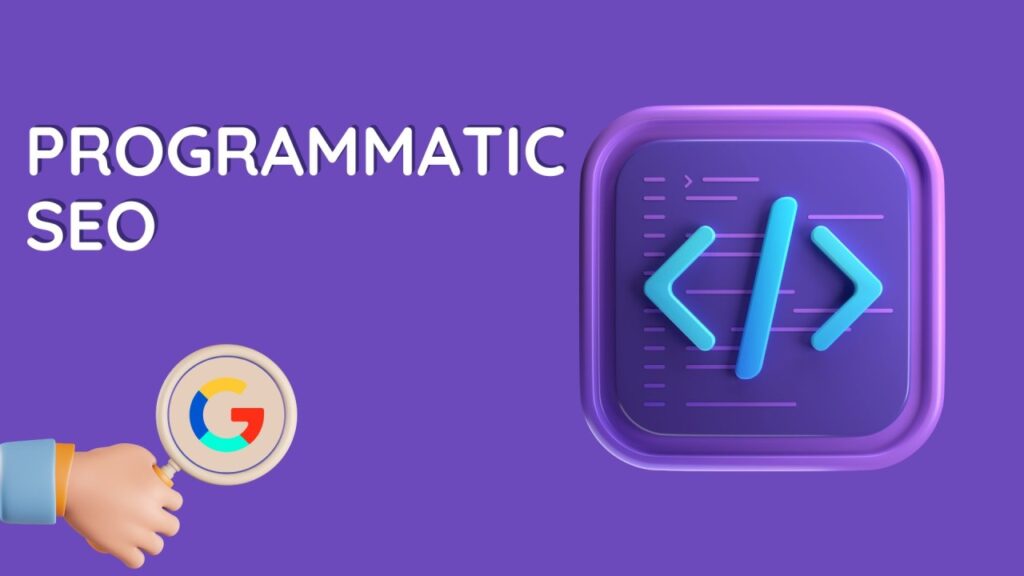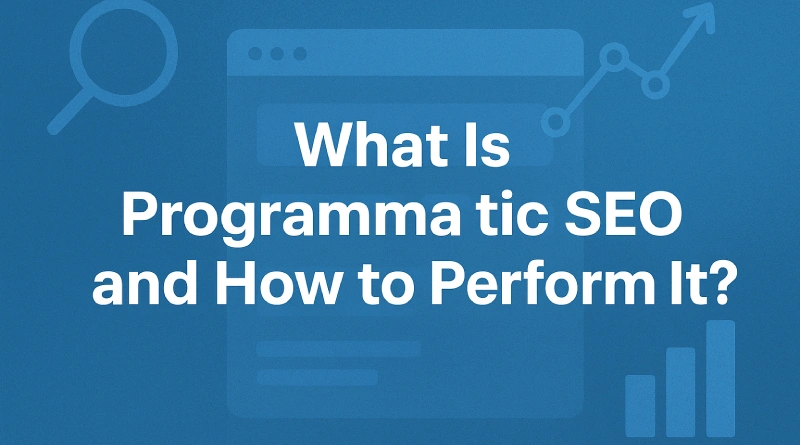What Is Programmatic SEO and How to Perform It?
Programmatic SEO (pSEO) has become a game-changer in the rapidly changing environment of online marketing, where businesses seeking to expand their online presence are turning to it. Programmatic SEO, in design, is more effective than traditional SEO because it requires manual work to plan, write and optimize pages manually to rank well based on manually selected keywords. Giant organisations such as Tripadvisor, Yelp, and Zapier use this to generate a large amount of organic traffic by indexing a large number of long tail keywords. In the competitive business world, exponential business growth is unlocked with pSEO mastery, in addition to saving time and resources. Want to learn more about what is programmatic SEO, how it can be implemented, and why this is important in 2025? You will find a deeper insight here.
Understanding Programmatic SEO.
The process of automatically generating large numbers of web pages based on templates and data in an attempt to rank highly based on specific, frequently long-tail, keywords is called programmatic SEO. Dynamic database, API and web scraping content is placed on these pages based on the search intent of the user. In recent times, Tripadvisor has designed city-based pages such as Best Restaurants in Mumbai, to grab hyper-local searches, whereas Zapier is designing pages named after app connections, such as Google Sheets + Slack. As Ahrefs totted up, pSEO-enabled sites are able to maximise devices with a thousand low-competence keywords, driving 30-50% additional organic traffic than simply handsearched means.
The key lies in scalability. pSEO avoids creating separate postings to a blog in favor of having one template fill with unique information (e.g. city names or product specs). This is best used in acyclic industries such as travel, e-commerce, and real estate whose search queries are predictable. But spamming content with poor quality is not the point, and any Google algorithm such as RankBrain punishes empty or spacy content, focusing on value and relevancy.

How to Perform Programmatic SEO: A Step-by-Step Guide
- 1. Get a heading and some keywords: Find a general "head term" that fits your niche. For example, for a travel site, "hotels" would work, and for a SaaS platform, "integrations" would work. Long-tail terms that get a lot of searches but don't have a lot of competition can be found with Ahrefs or SEMrush. Such as "hotels in Goa." Long-tail keywords will make up 68% of searches in 2025 (Statista), making them great targets. Make sure that the head line can be changed in ways that will help the business grow. One example of this is Zapier's more than 800,000 connection pages.
- 2. Get data and clean it up: Find accurate information to put on your pages. This could be private (like product lists), made by users (like Yelp reviews), or scraped (as long as the rules of service are followed). Zillow, for instance, uses real estate info like home prices and school ratings. SEOMator says that cleaning and organizing data could help you avoid making mistakes. Pages that use info that you can't trust don't do well.
- 3. How to Make a Page Template: Make a template that can be used over and over again. It should have the same parts (like photos, reviews, and maps), but the keyword and data areas should be changed. You can do this more easily with tools like Webflow or WP All Import for WordPress. Google will flag your pages for similar content if they don't feel different. You can do this by adding semantic variations and user-centered information like comparison tables or frequently asked questions.
- 4. Automation : To make a lot of pages at once, use automation tools like Zapier, Airtable, or your own Python scripts. Like Wise's 8.5 million currency conversion pages use APIs to get live exchange rates. Test a small group of three to five pages on Google Search Console to see how much traffic they can get before adding hundreds or thousands of pages.
- 5. Monitor and Optimize : Use Google Search Console or Mangools' SERPWatcher to measure metrics such as bounce rate, click-through rate (CTR), and organic traffic after launch. A high bounce rate (more than 70%) could indicate that user intent is not aligned. To reduce low-value pages, use Screaming Frog to audit for index bloat on a regular basis. In order to preserve ranks, Backlinko advises upgrading material according to performance statistics.
Unique Insights: Balancing Scale and Quality
A key point : pSEO’s strength comes from combining automation with human supervision. AI can create content, but Google’s 2025 upgrades focus on user value and punish “spam” pages that don’t have enough depth. Adding user-generated content, like Reddit’s Q&A forums, makes things more real and interesting. Also, as Gary Illyes from Positional says, pSEO isn’t a “set it and forget it” technique. You need to keep it up to date to avoid technical debt or indexing problems.
Another point of view : pSEO works well in niches where people look for the same things over and over again, but it doesn’t work as well in more specialized industries (like a bakery that only sells a few things). Businesses need to figure out if their head phrase has enough variations to make the work worth it. A lean test—publishing a few pages and monitoring traffic after 30 days—can validate scalability without heavy investment.
Local Context: India’s Digital Boom
In India, where there will be 900 million internet users by 2025 (TRAI), pSEO is a goldmine for the travel and e-commerce industries. India’s $100 billion digital economy (Ficci-EY) may be tapped into via hyper-local pages like “best cafes in Delhi” or “budget hotels in Jaipur.” This is because 70% of searches are done on mobile devices (Nasscom). Small firms, like startups in Bangalore, can use no-code solutions like Webflow and Whalesync to compete with big companies. However, they need to be careful to follow Google’s tight quality rules to avoid getting in trouble.
Why It Matters and Next Steps
Programmatic SEO is the best way to scale, but it only works if you focus on quality, intent alignment, and constant improvement. It’s a cheap approach for firms to take over niche searches, especially in fast-growing regions like India. To meet Google’s standards and get AdSense approval, start small, test thoroughly, and put user value first. By combining automation with strategic control, you can turn your site into a traffic powerhouse.
Disclaimer
The information presented in this blog is derived from publicly available sources for general use, including any cited references. While we strive to mention credible sources whenever possible, Best Website Design Agency in Mumbai does not guarantee the accuracy of the information provided in any way. This article is intended solely for general informational purposes. It should be understood that it does not constitute legal advice and does not aim to serve as such. If any individual(s) make decisions based on the information in this article without verifying the facts, we explicitly reject any liability that may arise as a result. We recommend that readers seek separate guidance regarding any specific information provided here.

